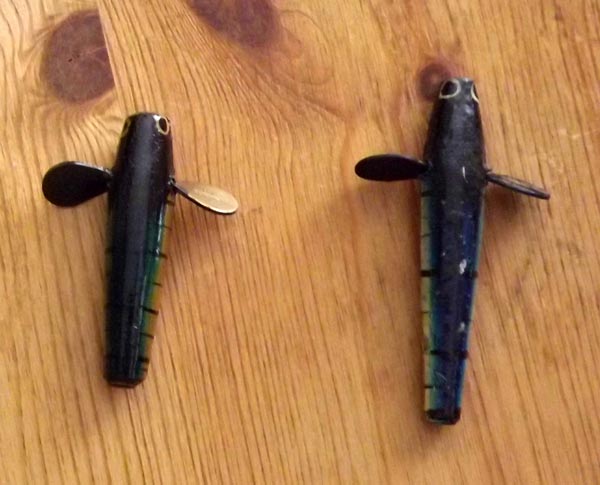If you read Gilbert’s book “Tales of a Wye Fisherman” a few things are stand out. Firstly, the huge number of salmon caught, especially by Robert Pashley, the Wye Wizard who caught over 10,000 salmon in his fishing career. However, Gilbert also says much of the praise should also go to Herbert Hatton’s tackle shop and the Devon Minnow that he patented.
The Devon minnow, as it name suggests started in Devon, in Totnes and was originally known as the Angel. (You can see a photograph of one in the archive). However, the development was taken on a stage further by Hatton’s when they produced a semi-bouyant one. This fished horizontally, and was ideal for salmon waters such as the Wye.
Below is a picture of the original Devon Minnow produced by Hatton’s and is still in the family possession. Herbert used to sleep with it on his bedside table.
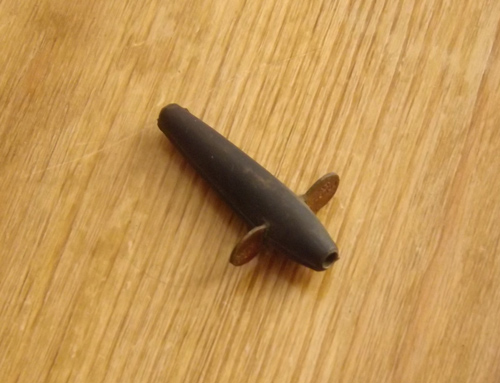
The patent for the minnow is also shown below:-
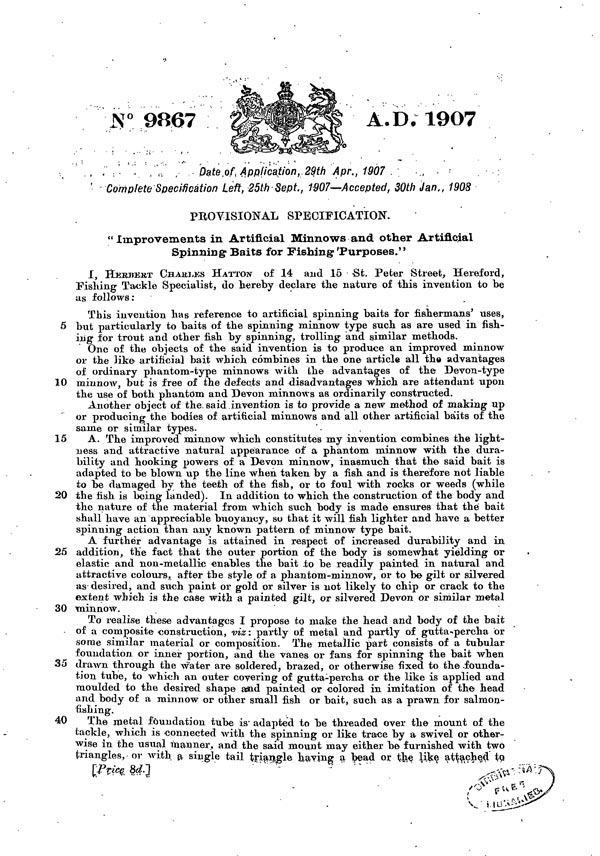
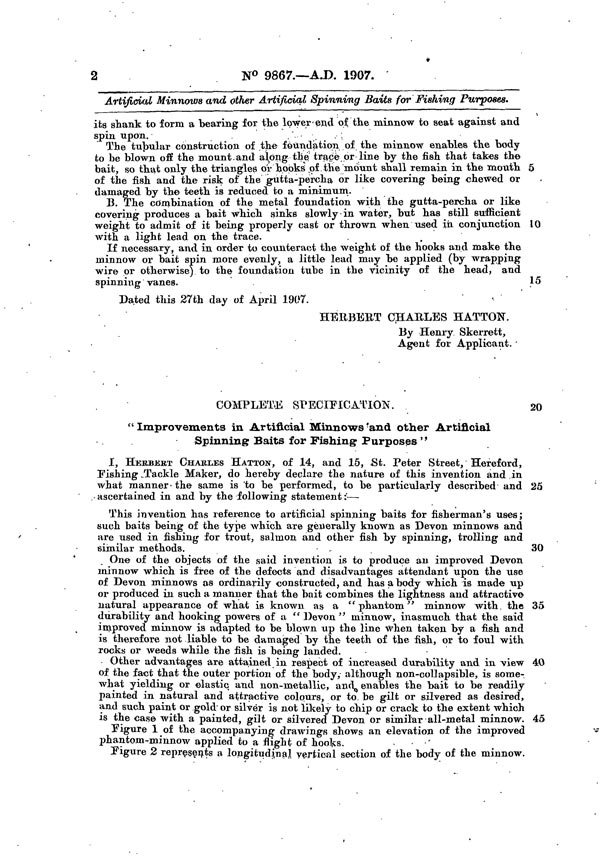
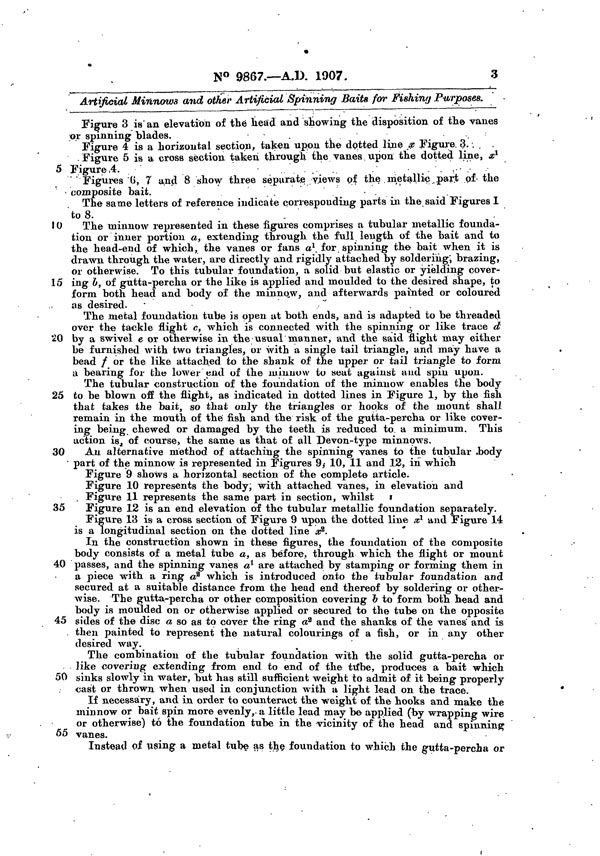
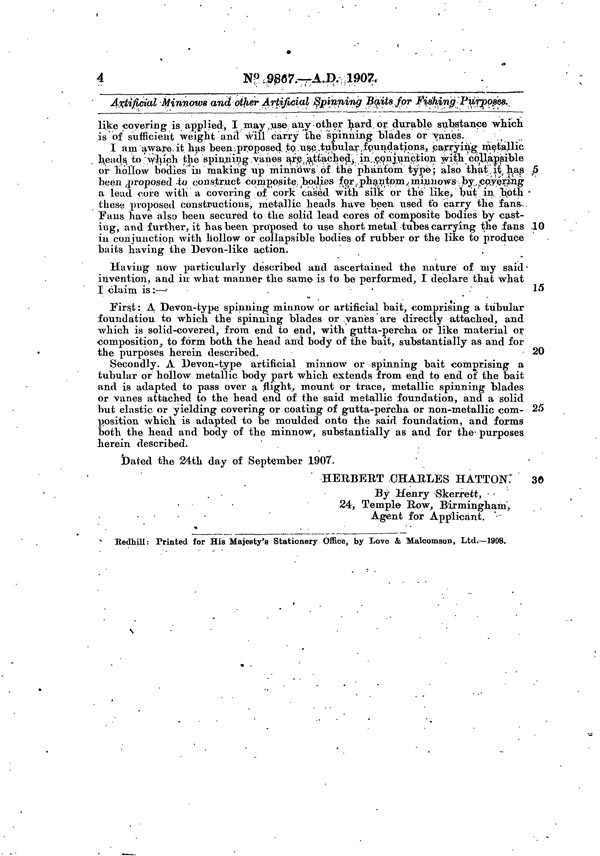

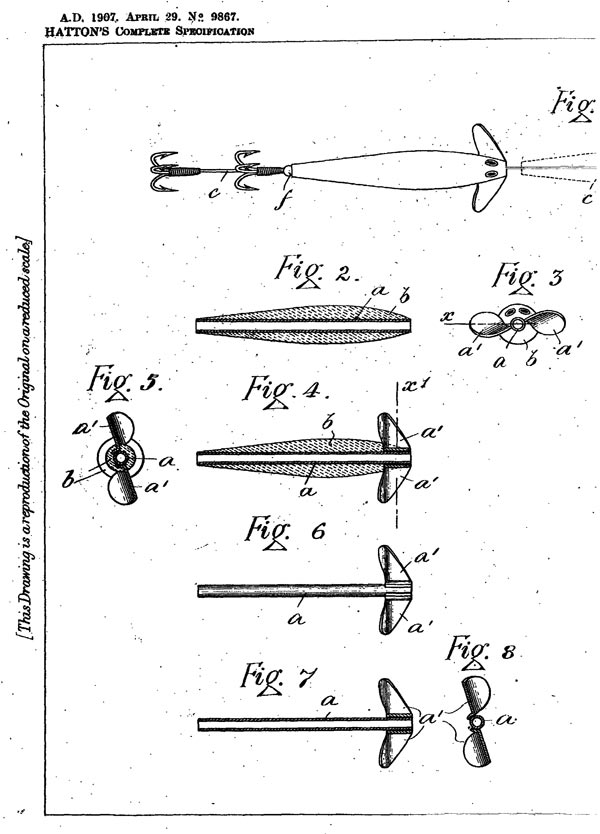
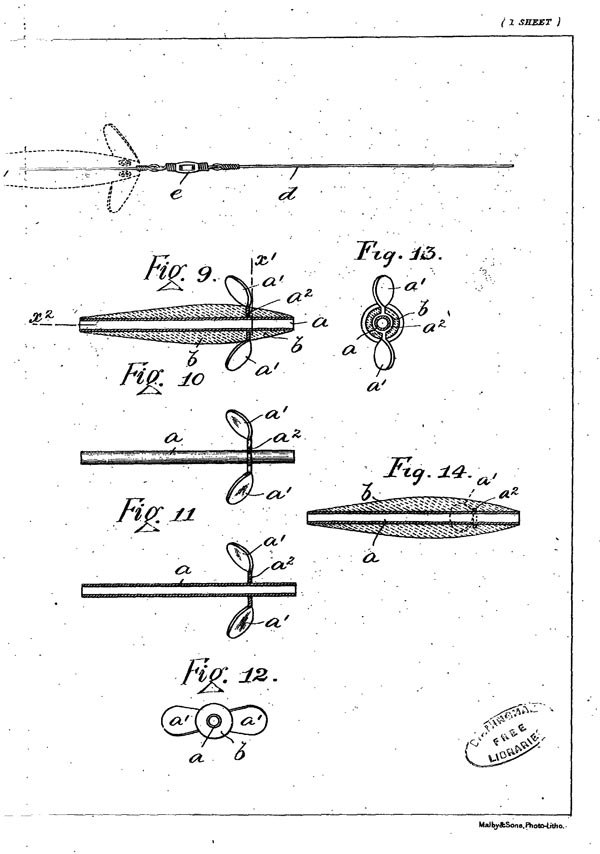
This was a laborious process which is described by Norman Owen in the Audio section of the archive. Norman joined straight from school and eventually purchased the business and must have made thousands of these minnows.
When interviewed, he described the manufacturing procedure as follows:-
Cut a length of tube
Put the fins in place in a jig
Solder on the fins
Boil the soldered item to kill the acids used to help the soldered joint
Polish the fins
Square off the tube ends
Heat the gutta perch (The buoyant material used to help it keep level)
Wrap the gutta perch around the minnow tube
Press the item in a mould to get the correct shape
Remove the lure from the mould and trim any “flash” squeezed out
The lure was then reamed again
The gutta perch was trimmed around the fins with a knife
The fins were stamped Hattons and a patent number added
They were undercoated 3 times and finally the markings were painted.
In all a minnow could be handled 22 times in the process and they cost 7/6, 6/6 and 5/6 dependant upon the size which was a lot after the war and reflected the work that had to go into them. Norman said they would be too expensive now.
Finally, Mrs. Hatton did most of the finish painting and she is pictured at her bench below, followed by photographs of the finished items.

